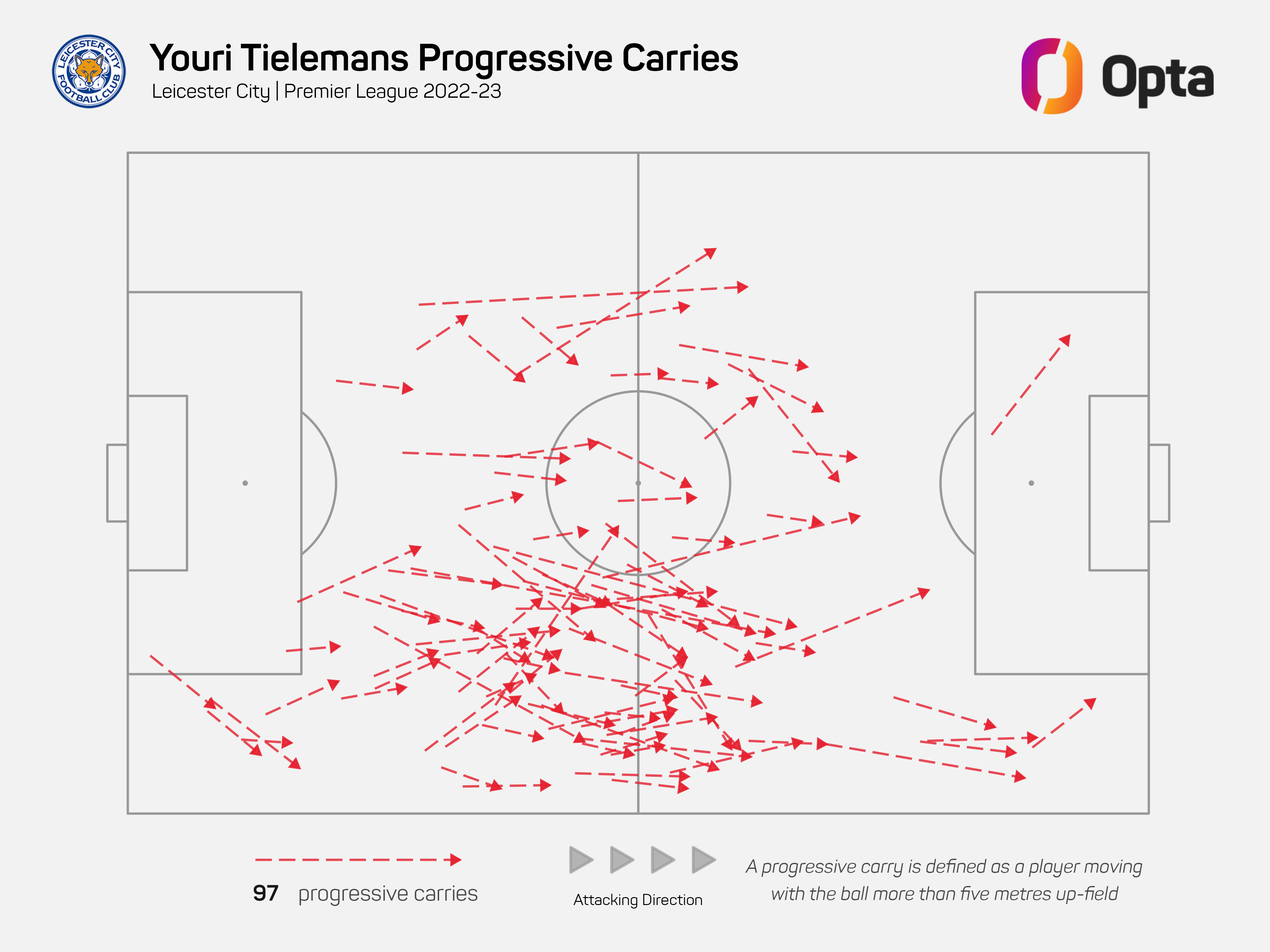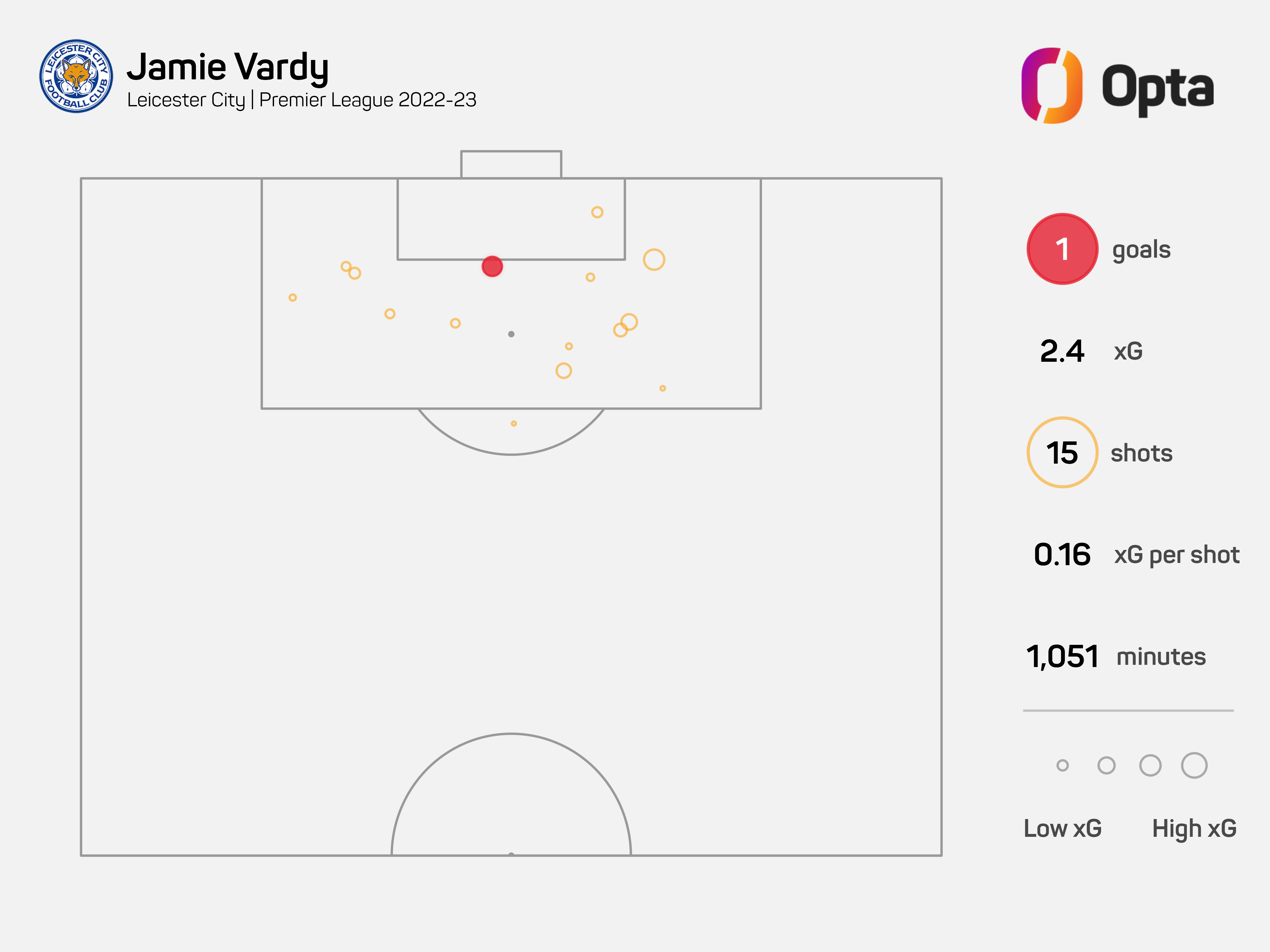Miles Away
Well-Known Member
There’s actually a decent article from Tanner on the declining form of key players on The Athletic today:And Ndidi and Vardy and Thomas and Castagne and Barnes all of whom look woefully out of form.
Assessing Leicester’s decline through the dwindling form of four key players
Rob TannerLeicester City have been a team in decline for the past year at least, but the drop-off this season has been alarming.
Apart from James Maddison, there are few players who have been at the club over the last couple of seasons who have improved.
While there have been subtle changes in the performances of some key players and the roles they play in the team, some of Brendan Rodgers’ men look like shadows of their former selves.
It is evident to those who have regularly watched Leicester this season that the team as whole — and some of the side’s most reliable performers — are struggling for form and confidence.
Using four of the club’s key players from previous seasons and comparing their statistics, using mainly Smarterscout, a website that uses match data and algorithms to produce metrics and ratings which assess the performances of players in the various different aspects of the game, The Athletic assesses which players have seen the biggest loss of form in 2022-23.
Wilfred Ndidi
Wilfred Ndidi’s defensive contribution has dropped off dramatically this season. The Nigerian was once among the leading defensive midfielders in the top five leagues in Europe for tackles and recoveries, but there has been a big reduction in his effectiveness over the last 18 months.In 2020-21 his defending quantity, which measures the number of opportunities per minute a player has to disrupt an attack, was as high as 96 out of 99, with the quality rating, which measures the player’s contribution towards the prevention of conceding chances, as high as 87 out of 99.
Last season his defending quantity was even higher at 97 out of 99 but the quality rating had reduced to 62.
This season his quantity rating is down to 47 and his quality rating is as low as 16 out of 99. Something is amiss.
In terms of disrupting the opposition’s moves, Ndidi had a rating of 99 out of 99 two seasons ago, making him the best in the Premier League, and last season it was only slightly reduced to 96, but in 2022-23 it has declined to 86. Meanwhile, his rating for recovering the ball in open play rose from 79 out of 99 two seasons ago to an impressive 92 last season before falling to a very average 54 this campaign.
It should be noted that Ndidi has also been used on occasions as a centre-back this season, a positional switch which will impact any player’s output.
Even so, his ability to win aerial duels — eternally important for a central defender — has also declined from a 94 last season to 54, a clear sign that he isn’t as effective as he once was, and by quite a large margin, which explains why Rodgers tended to utilise Boubakary Soumare in the defensive midfield role before he got injured.
Youri Tielemans
Defensively, Youri Tielemans is actually around where he was two seasons ago, when his Smarterscout defensive quantity rating was 43 out of 99 but his quality rating was as high as 74. While last season’s ratings were 60 for quantity and for 40 for quality, this season they are back to 49 and 72 respectively.However, his ability to disrupt the opposition’s moves rating has dropped from 80 last season to just 51 this season, while his recoveries rating — which assesses how often a player intercepts passes or picks up loose balls per minute — is down from 37 to just 26.
On the ball, though, Tielemans is still contributing. His attacking output rating, which measures his contribution to Leicester’s expected xG per minute they are in possession, is as high as 86 compared to last season’s rating of 58 and his rating of 73 two seasons ago.
His passing towards goal rating, which measures a pass that brings the ball at least 10 meters closer to the centre of the opponent’s goal per attacking touch, is as high as 97 compared to his relevant peers in the Premier League. That’s up from 69 last season and 75 the season before.
Tielemans prefers to progress the ball through his incisive distribution, but he has been forced to carry the ball forward more, and his dribble rating has subsequently risen from 21 to 35. As a result, he is getting into the opposition’s penalty area more frequently to receive the ball, with a rating of 55 compared to just 26 last season, but he is shooting less as his shooting rating is down from 88 to 68.

Overall, Tielemans has been one of Leicester’s more effective attacking players this season. His non-penalty xG per 90 has increased and his percentage rating for involvement in moves that end in a goal is up from 39 to 66. In fact, his involvement in the team’s total xG rating is up from 48 to 79 out of 99, meaning Tielemans is contributing more in an attacking sense. And he has needed to, because of the severe decline in output of…
Jamie Vardy
Jamie Vardy’s goal output decline is clear with just one Premier League goal so far this season, despite an xG of 2.4, but there are some explicable reasons for this decline. For starters, Vardy is receiving the ball less frequently in the penalty box, 4.11 times per 90 compared to his average of 5.4 last season, which sees his attacking rating reduced from 89 to 78, and when he does receive the ball in the penalty area he is shooting less often, down from 2.69 per 90 minutes last season to just 1.29 per 90 minutes.That has seen his shooting rating from last season, when he scored 15 Premier League goals, reduced from the maximum of 99 to just 11 this season, a huge drop for one of the Premier League’s greatest goalscorers.
The table below shows Vardy’s goal total after 19 appearances in each Premier League season he has played in:
Vardy is back where he started...
| SEASON | GOALS AFTER 19 GAMES |
|---|---|
| 2014-15 | 1 |
| 2015-16 | 15 |
| 2016-17 | 5 |
| 2017-18 | 8 |
| 2018-19 | 7 |
| 2019-20 | 17 |
| 2020-21 | 11 |
| 2021-22 | 10 |
| 2022-23 | 1 |
Overall his attacking output rating is down from 47 to just 7 but defensively, Vardy has been more involved this season. His disruption of opposition moves rating has doubled from 7 to 14 out of 99 and his recoveries rating has leapt up from 8 to 46, but is this the sort of work Vardy should be doing?
Nobody can dispute that Vardy is still working incredibly hard for the team but it appears to be at the cost of his own goalscoring effectiveness, and when he does get a scoring opportunity he is no longer as clinical as in the past.

Harvey Barnes
Leicester City are statistically the most wasteful team in the Premier League. They have scored 26 goals this season with an expected goals rating of 22.03, which isn’t bad. But they have created 31 big chances and have scored just eight of them, a big chance conversion percentage of just 25.8, the lowest in the division (a big chance is defined by Opta as a situation where a player should reasonably be expected to score). It is only slightly less than Liverpool— a team with much publicised attacking issues — who have a conversion percentage of 26.7.Harvey Barnes has already equalled his goal total in the league from the whole of last season with six and he has an xG of 5.1, by far the highest of any Leicester player, although top-scorer Maddison, who has scored seven, has far exceeded his lowly xG of 2.6 thanks to some typically excellent long-range shooting.
Leicester City forwards' attacking metrics 2022-23
Barnes’ big chance conversion percentage is also the best of the Leicester players at 30 per cent, although he has had by far the most big chances with 10 and has missed seven. Vardy has had six big chances and missed five, while Patson Daka has had four and missed three. Only one of Maddison’s goals was classed as a big chance and he converted it. Teams and players should be looking to score at a rate of about one in two, so Leicester are clearly falling short.
Smarterscout confirms that Barnes’ attacking output is down overall. He has yet to provide an assist and his rating of 29 is down from 60 last season, when he assisted ten times, a total beaten only by Mohamed Salah and Trent Alexander-Arnold across the whole of the Premier League.
Instead of being part of the supply chain for the main striker in Rodgers’ system, whether that is Daka or Vardy, Barnes has become the focal point and the main goal threat, but like the rest of his team-mates, he needs to increase his conversion rate to reflect his new prominence.
It would also explain why Rodgers has been reluctant to change to a two-man attack rather than a system that would include Barnes as the main winger, although such an alteration might help Vardy and Daka get back to their potent best. Someone needs to, before Leicester are locked into the relegation battle they looked like they had pulled clear of a few months ago.



